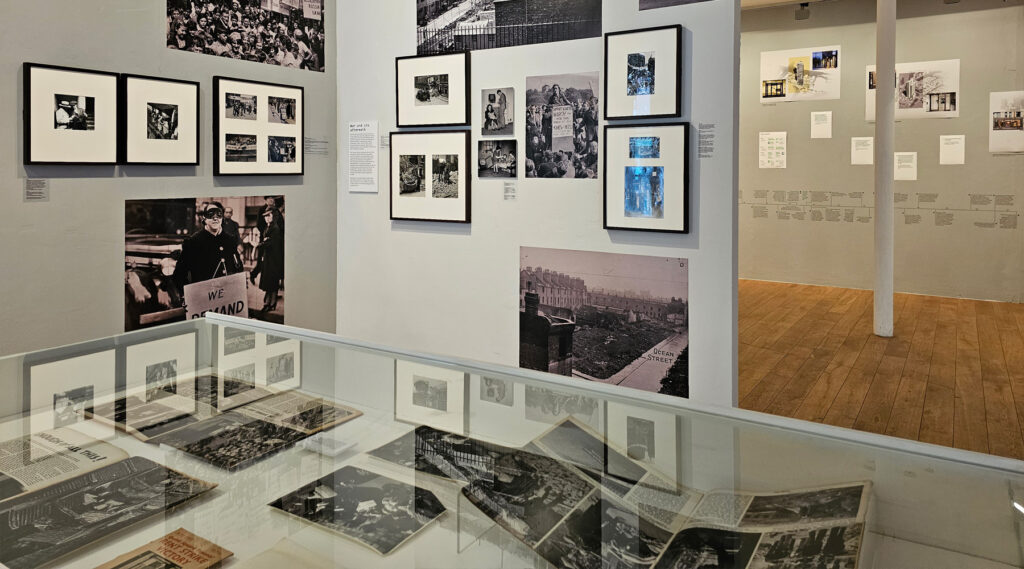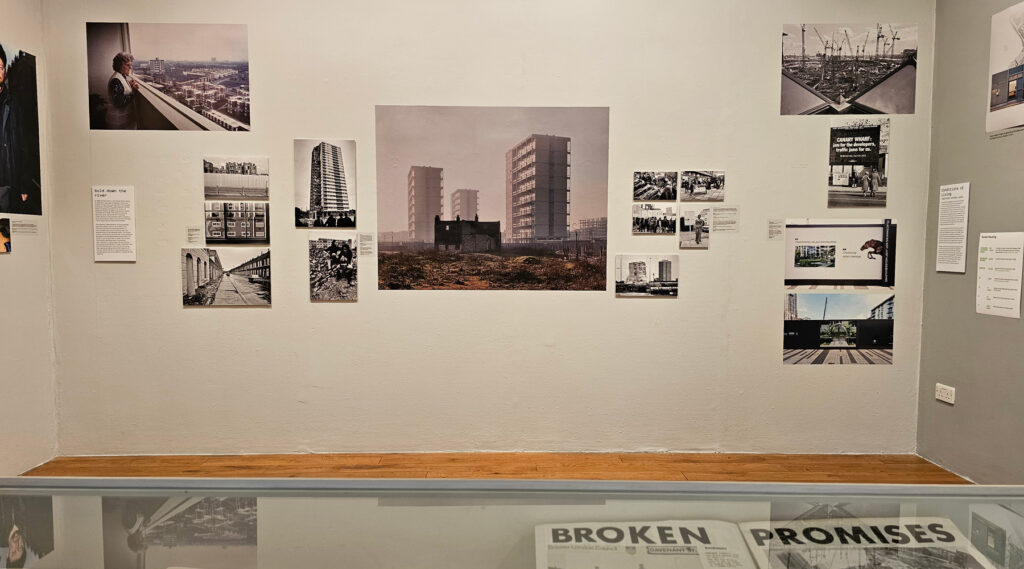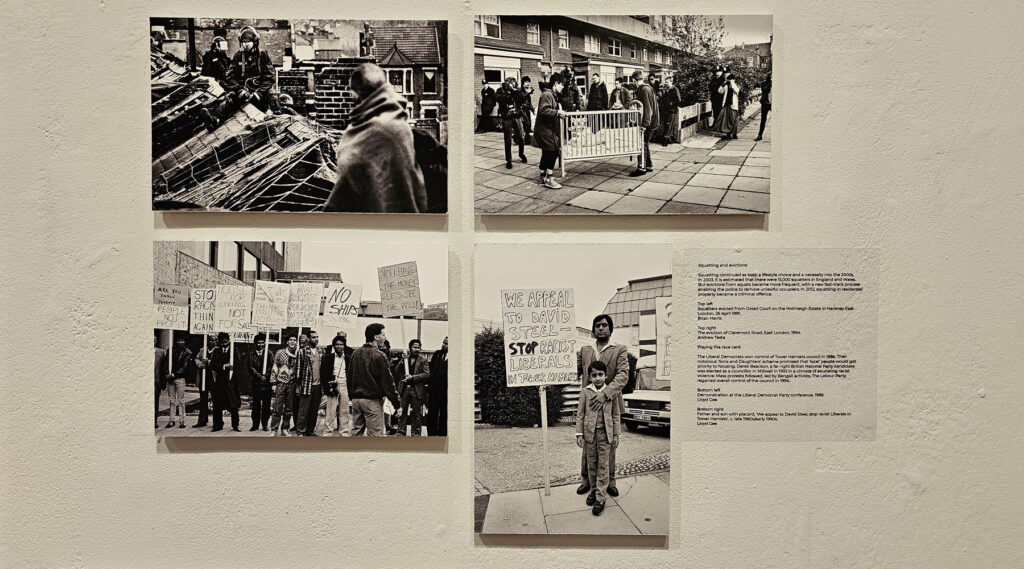The exhibition covers the range of housing problems from the pre-war slums, through the problems with rebuilding devastated London and more recently issues with “poor doors” in shared buildings.
It opens with a look at late Victorian slums and the way people were crammed into tiny spaces. The photos do show the deprivation, but also at times, the humour of the young who can’t help but act up for the strange man taking photos of their homes.
A lot of the early attempts at improving housing were paternalistic in nature, to prevent moral decay rather than to improve people’s lives as if that was enough on its own.
A photo of a bowler hat wearing official talking to a mother in a slum is striking for the contrast between the two, and he is actually a representative from Doctor Barnardos offering assistance.
A section looks at the rent strikes, that took place several times in the 1930s and 1960s when groups rebbeled against landlords raising rents on their tenants.
War left its dreadful legacy, causing even more overcrowding in the houses that remained, and it’s clear that there’s a lot of anger at how people are being treated with slow rebuilding adding to the problems.
The post-war tower blocks introduced their own problems, although a candid interview with one resident bemoans less the building itserlf than the loss of small boundaries and mixing people from, for example, Hoxton and Stepney in the same tower block, which she saw as a breaking down of the old order.
About a third of the exhibition is a look at the issue of “poor doors” where people who don’t pay for the concierge facilities are expected to use a different door to those who do. It’s a difficult situation as on the one hand, it’s demeaning, but on the other, would forcing people to pay for facilities they might not want be fair either.
A wider issue is that if the protests against the split entrances get louder, then property developers may fall back on their other preferred option – to build social housing a few miles away in a separate development entirely.
Which would be worse.
As an exhibition, it wears its politics openly, and while there are undeniably a heck of a lot of problems with housing today, it can feel sometimes as if activists are rather keener on fighting than they are on offering what people actually want.
More YIMBYs are needed to sort out the housing mess.
In the meantime, this exhibition should remind us how far we have successfully come at improving housing and spur the determination to keep on improving access to decent housing in London.
The exhibition, Conditions of Living: Home and Homelessness in London’s East End is at the Four Corners Gallery in Bethnal Green until 2nd September 2023 and is free to visit.
The gallery is open Tuesday to Saturday from 11am to 6pm.










Leave a Reply